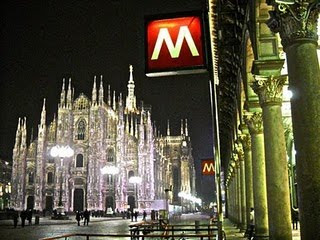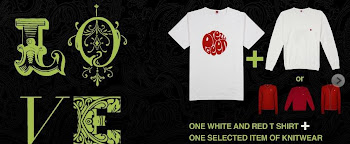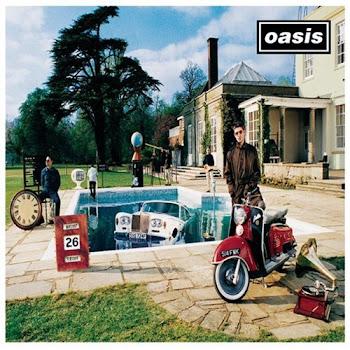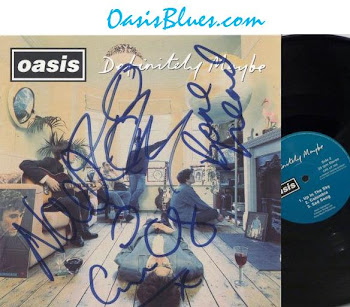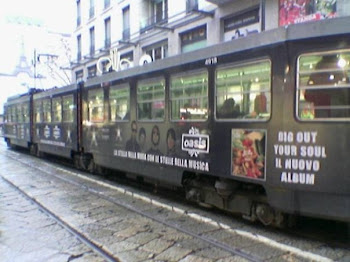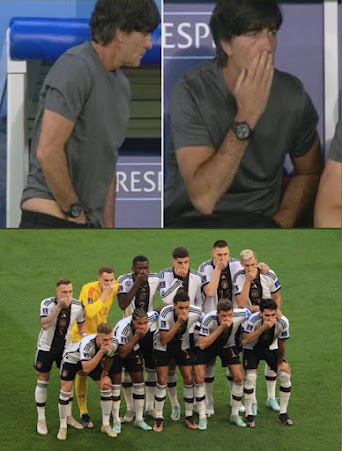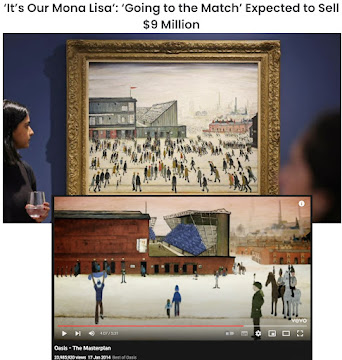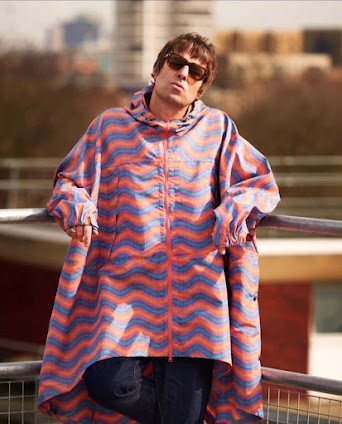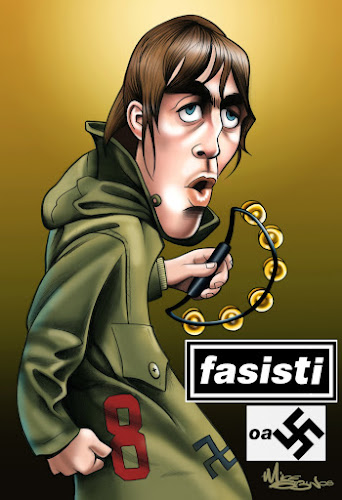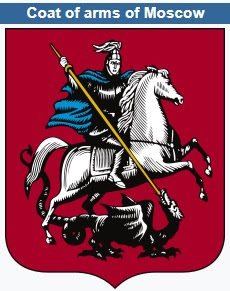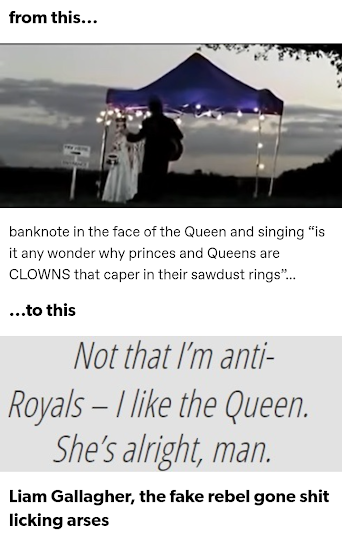LONDON - Photo: in Glastonbury, Florence Welch (without the Machine :), loved by Noel's wife Sara (while Liam of course said 'I'm not having her' :), wearing Clarks, last year she laughed while she was singing in Milan when we were joking with her name ("ti amo Firenze", "Paolo + The Machine", etc. she was performing the same day of Paolo Nutini).
British and Italian shoes are considered the best in the world, Clarks is probably the most famous.
Nathan Clark was serving as an officer in the Royal Army Service Corps in 1941 when he chanced upon an idea that would revolutionise British footwear.
Having been posted to Burma, he made a note of what the soldiers there were wearing on their feet — quite natural, given he was a member of the family behind Clarks, one of the world’s most iconic shoe companies.
He duly reported back to base in Street, Somerset, where his brother, Bancroft, was chairman of the firm.
Bancroft had asked Nathan to gather any information that might be of use to the company while on his Army travels. And so the Desert Boot was born.
Nathan worked on the design for a brown suede boot while he was at Staff College in 1944, and also while on leave in Kashmir where three divisions of the old Eighth Army were wearing something similar — having had them made up in Cairo’s Khan el-Khalili bazaar.
Nathan sent sketches and rough patterns back to Bancroft, but nothing much happened. In fact, the Stock Committee superintendent — a man called Arthur Martin — told the Clarks company board the boots would ‘never sell’.
Undaunted, Nathan returned to Street and began cutting the patterns himself. Then, in his capacity as Overseas Development Manager, he showed his prototype boot to Oscar Schoeffler, fashion editor of Esquire, whom he had met at the Chicago Shoe Fair in 1949.
The magazine ran a story — with pictures — and Clarks had a bestseller on its hands (or feet).
More than ten million of Nathan’s Desert Boot — described in a 1957 advert as the ‘world’s most travelled shoes’ — have since been sold in 100 countries. The boot was named one of the ‘Fifty Shoes That Changed The World’ by the Design Museum in 2009.
There is certainly no shortage of famous devotees. Oasis star Liam Gallagher was so taken by Clarks’ classic Desert Boot in the 1990s that he hardly wore anything else. Then he went one step further by collaborating with Clarks to design his own version of the boot as part of his burgeoning Pretty Green clothing label.
Not to be outdone, Bob Dylan, Robbie Williams and even Cabinet minister Kenneth Clarke slipped into their own Desert Boots, too.
And it wasn’t just men who loved the combination of comfort, ruggedness and fashion-savvy the boots offered. Sex And The City actress Sarah Jessica Parker was spotted searching for the famous suede boots in a New York shoe store, and bought two pairs — one in brown, one in black — because she couldn’t decide which she liked best.
The boots’ association with a certain street chic only temporarily faltered when Tony Blair was seen wearing a pair in 1999 during a slavish attempt to align himself with Cool Britannia.
But in the past decade, sales of the boots have soared and Clarks has just recorded pre-tax profits of more than £100million.
That’s quite a result and one that would have been noted keenly by Nathan Clark shortly before he died last week at the age of 94.
Nathan was the great grandson of James Clark, who founded the company with his brother, Cyrus, in 1825, a Quaker enterprise that grew from humble beginnings to become the best-known shoe brand in the world.
And, amazingly, it has remained a British company, with more than 80 per cent of its shares owned by members of the Clark family.
Manolo Blahnik, the Spanish shoe designer, is a fan. He says he ‘adores’ Clarks’ boots, adding ‘there’s always a stiffness to them’.
This is perhaps part of the secret. There’s a residual stiffness and solidity to Clarks itself because it remains committed to its Quaker roots, which welcomes profit but also places a great deal of emphasis on social responsibility.
In Somerset, Street’s public swimming pool, its library, town hall and much of the town’s housing was built with Clarks money.
And because the Clarks were heavily involved with the Temperance Movement, it wasn’t until the Seventies that the pub opposite the factory was allowed to serve alcohol.
Clarks make sensible shoes that go the distance. And maybe it’s the case that, after being untrendy for a while, they have now, conversely, become trendy once more.
Traditionally, children and the over-60s have been their main customers — but not any more. Young Chinese seem to love Clarks footwear, with busloads of tourists turning up at the Street headquarters after stopping at Stonehenge and Bath en route.
There’s a museum on site and a vast Clarks Village Outlet that draws 4.1 million visitors a year.
Today, Clarks’ shoes are made in Vietnam, Brazil and, ironically enough, China, where sales were up 22 per cent last year.
Dear old Nathan: his grand-father William saved the company from bankruptcy in the 1860s — but his own contribution was extraordinary, for Desert Boots were not the only great invention he made during his wartime posting.
He also came up with the idea of introducing to Britain the Chupplee, an open-toe sandal with soft leather covering the contours of the foot. It was nothing like the slovenly, down-at-heel modern flip-flop.
Nathan had noted that both senior officers and rank-and-file soldiers in the Indian Army wore Chupplees with aplomb, and decided to sell them at home, where they quickly became popular with a certain kind of raffish man keen to dispense with brogues or lace-ups during the summer months. (They were more Edward VIII than Prince Charles.)
Nathan died in New York, where he had lived for many years, though he never married. Latterly, he would shuffle around his Gramercy town house with the aid of two towering, ornate walking sticks, surrounded by labelled portraits of his ancestors.
Eccentric to the end, a few years ago Nathan was visited by a writer from Vanity Fair who noticed that his shoes didn’t match. On his left foot he wore a Chupplee sandal, and on his right a Desert Boot.
Mark Palmer is writing the official history of C & J Clark Ltd, to be published next year.
Having been posted to Burma, he made a note of what the soldiers there were wearing on their feet — quite natural, given he was a member of the family behind Clarks, one of the world’s most iconic shoe companies.
He duly reported back to base in Street, Somerset, where his brother, Bancroft, was chairman of the firm.
Bancroft had asked Nathan to gather any information that might be of use to the company while on his Army travels. And so the Desert Boot was born.
Nathan worked on the design for a brown suede boot while he was at Staff College in 1944, and also while on leave in Kashmir where three divisions of the old Eighth Army were wearing something similar — having had them made up in Cairo’s Khan el-Khalili bazaar.
Nathan sent sketches and rough patterns back to Bancroft, but nothing much happened. In fact, the Stock Committee superintendent — a man called Arthur Martin — told the Clarks company board the boots would ‘never sell’.
Undaunted, Nathan returned to Street and began cutting the patterns himself. Then, in his capacity as Overseas Development Manager, he showed his prototype boot to Oscar Schoeffler, fashion editor of Esquire, whom he had met at the Chicago Shoe Fair in 1949.
The magazine ran a story — with pictures — and Clarks had a bestseller on its hands (or feet).
More than ten million of Nathan’s Desert Boot — described in a 1957 advert as the ‘world’s most travelled shoes’ — have since been sold in 100 countries. The boot was named one of the ‘Fifty Shoes That Changed The World’ by the Design Museum in 2009.
There is certainly no shortage of famous devotees. Oasis star Liam Gallagher was so taken by Clarks’ classic Desert Boot in the 1990s that he hardly wore anything else. Then he went one step further by collaborating with Clarks to design his own version of the boot as part of his burgeoning Pretty Green clothing label.
Not to be outdone, Bob Dylan, Robbie Williams and even Cabinet minister Kenneth Clarke slipped into their own Desert Boots, too.
And it wasn’t just men who loved the combination of comfort, ruggedness and fashion-savvy the boots offered. Sex And The City actress Sarah Jessica Parker was spotted searching for the famous suede boots in a New York shoe store, and bought two pairs — one in brown, one in black — because she couldn’t decide which she liked best.
The boots’ association with a certain street chic only temporarily faltered when Tony Blair was seen wearing a pair in 1999 during a slavish attempt to align himself with Cool Britannia.
But in the past decade, sales of the boots have soared and Clarks has just recorded pre-tax profits of more than £100million.
That’s quite a result and one that would have been noted keenly by Nathan Clark shortly before he died last week at the age of 94.
Nathan was the great grandson of James Clark, who founded the company with his brother, Cyrus, in 1825, a Quaker enterprise that grew from humble beginnings to become the best-known shoe brand in the world.
And, amazingly, it has remained a British company, with more than 80 per cent of its shares owned by members of the Clark family.
Manolo Blahnik, the Spanish shoe designer, is a fan. He says he ‘adores’ Clarks’ boots, adding ‘there’s always a stiffness to them’.
This is perhaps part of the secret. There’s a residual stiffness and solidity to Clarks itself because it remains committed to its Quaker roots, which welcomes profit but also places a great deal of emphasis on social responsibility.
In Somerset, Street’s public swimming pool, its library, town hall and much of the town’s housing was built with Clarks money.
And because the Clarks were heavily involved with the Temperance Movement, it wasn’t until the Seventies that the pub opposite the factory was allowed to serve alcohol.
Clarks make sensible shoes that go the distance. And maybe it’s the case that, after being untrendy for a while, they have now, conversely, become trendy once more.
Traditionally, children and the over-60s have been their main customers — but not any more. Young Chinese seem to love Clarks footwear, with busloads of tourists turning up at the Street headquarters after stopping at Stonehenge and Bath en route.
There’s a museum on site and a vast Clarks Village Outlet that draws 4.1 million visitors a year.
Today, Clarks’ shoes are made in Vietnam, Brazil and, ironically enough, China, where sales were up 22 per cent last year.
Dear old Nathan: his grand-father William saved the company from bankruptcy in the 1860s — but his own contribution was extraordinary, for Desert Boots were not the only great invention he made during his wartime posting.
He also came up with the idea of introducing to Britain the Chupplee, an open-toe sandal with soft leather covering the contours of the foot. It was nothing like the slovenly, down-at-heel modern flip-flop.
Nathan had noted that both senior officers and rank-and-file soldiers in the Indian Army wore Chupplees with aplomb, and decided to sell them at home, where they quickly became popular with a certain kind of raffish man keen to dispense with brogues or lace-ups during the summer months. (They were more Edward VIII than Prince Charles.)
Nathan died in New York, where he had lived for many years, though he never married. Latterly, he would shuffle around his Gramercy town house with the aid of two towering, ornate walking sticks, surrounded by labelled portraits of his ancestors.
Eccentric to the end, a few years ago Nathan was visited by a writer from Vanity Fair who noticed that his shoes didn’t match. On his left foot he wore a Chupplee sandal, and on his right a Desert Boot.
Mark Palmer is writing the official history of C & J Clark Ltd, to be published next year.









.jpg)







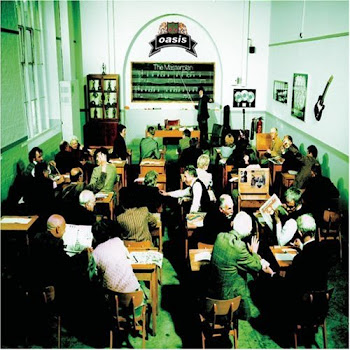
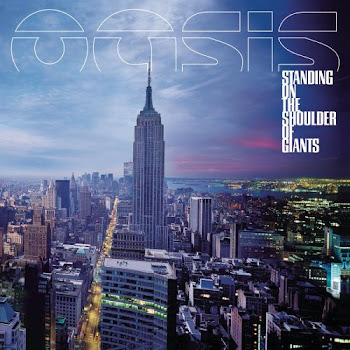

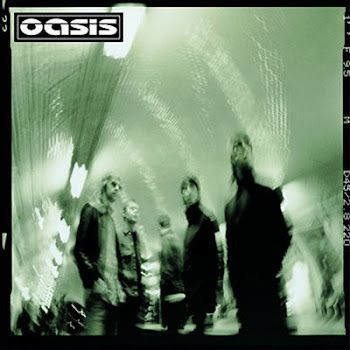


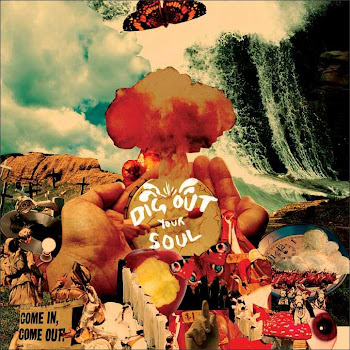
+Crest.jpg)


